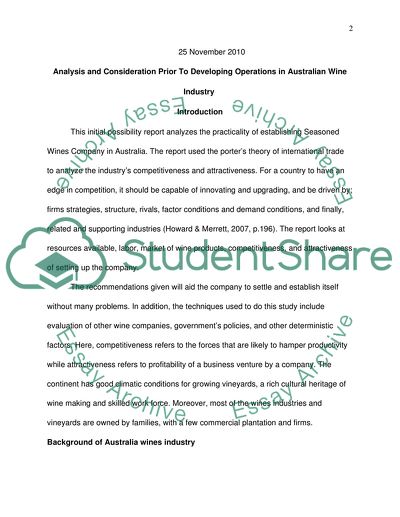Cite this document
(“Analysis and consideration prior to developing operations in Research Paper”, n.d.)
Analysis and consideration prior to developing operations in Research Paper. Retrieved from https://studentshare.org/miscellaneous/1573211-analysis-and-consideration-prior-to-developing-operations-in-australian-wine-industry
Analysis and consideration prior to developing operations in Research Paper. Retrieved from https://studentshare.org/miscellaneous/1573211-analysis-and-consideration-prior-to-developing-operations-in-australian-wine-industry
(Analysis and Consideration Prior to Developing Operations in Research Paper)
Analysis and Consideration Prior to Developing Operations in Research Paper. https://studentshare.org/miscellaneous/1573211-analysis-and-consideration-prior-to-developing-operations-in-australian-wine-industry.
Analysis and Consideration Prior to Developing Operations in Research Paper. https://studentshare.org/miscellaneous/1573211-analysis-and-consideration-prior-to-developing-operations-in-australian-wine-industry.
“Analysis and Consideration Prior to Developing Operations in Research Paper”, n.d. https://studentshare.org/miscellaneous/1573211-analysis-and-consideration-prior-to-developing-operations-in-australian-wine-industry.


